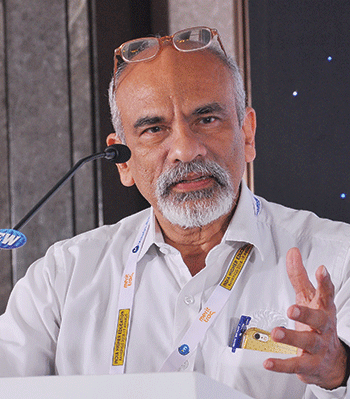Bridging the gap between old and new IIMs
 The IIM community comprises 20 IIMs spanning 20 states. IIM-Calcutta came into existence as the first national institute for postgraduate studies and research in business management in 1961, followed by IIM-Ahmedabad the same year. IIM-Bangalore was established in 1973 and IIM Jammu, the last to be added to the community, was founded in 2016.
The IIM community comprises 20 IIMs spanning 20 states. IIM-Calcutta came into existence as the first national institute for postgraduate studies and research in business management in 1961, followed by IIM-Ahmedabad the same year. IIM-Bangalore was established in 1973 and IIM Jammu, the last to be added to the community, was founded in 2016.
Fourteen of the 20 IIMs were promoted after 2007. It would be harsh to say the new IIMs have not done well, because they are still very young and have a long way to go. The popular perception is that the new IIMs have diluted the IIM brand. I disagree. We need them because there’s so much talent in India that needs to be nurtured. Therefore, from the long-term perspective, we’ve done well to promote new IIMs.
The first six IIMs — Calcutta, Ahmedabad, Bangalore, Lucknow, Indore, Kozhikode — are now financially independent and don’t receive any government funding on the capital or operating accounts. The new IIMs are funded by the Central government, with land being provided by state governments. This is one reason why the six older IIMs charge high tuition fees: they need to remain financially independent.
To help the new IIMs get off the ground, the Central government introduced the intelligent concept of mentoring under which the well-established six IIMs take the new institutions, depending on locational proximity, under their wing. The mentoring of second-generation IIMs in Rohtak, Ranchi, Raipur, Tiruchirappalli, Kashipur and Udaipur (promoted between 2007-2011) was undertaken by IIMs in Lucknow, Calcutta, Indore, Bangalore and Indore respectively. Essentially the mentoring programme focuses on administrative matters such as setting up admission processes and programme administration. Government also ensures governance systems and processes are in place with the chairman, board and directors appointed in early stages of operations.
Third generation IIMs — Amritsar, Sirmaur, Sambalpur, Visakhapatnam, Nagpur, Bodhgaya and Jammu, promoted after 2015 — have also benefitted from the mentoring concept. They are being mentored by IIMs in Kozhikode, Lucknow, Indore, Bangalore, Ahmedabad, Calcutta and Lucknow respectively. However, with the third generation IIMs, mentoring is more intense with mentor institutions directly involved in setting up and running the IIMs for the first several years. This includes designing and managing the admission process, programme delivery, culture setting for students, establishing administration systems and supporting faculty recruitment. Moreover, to share good governance practices, mentor institute directors serve on the boards of mentee institutes.
Mentoring has helped the new institutions strengthen their base but there remains a gap in how the older and the newer IIMs are perceived. The gap needs to be plugged to ensure that the presence of ‘too many’ IIMs does not compromise the quality and established brand value of the IIMs.
Given that India has the highest number of B-schools of any country worldwide with the largest cohort of business management students, there’s an urgent need for B-schools including the new IIMs, to quickly establish reputation for providing good quality management education and thought leadership. How can the new generation IIMs achieve this and quickly? I believe by focusing on locally relevant issues. Perhaps the older IIMs also need to do so to a greater extent.
IIM Visakhapatnam is one of the country’s three coastal IIMs. Therefore, it has a great opportunity to distinguish itself by focusing on maritime and coastal ecosystem issues. IIM Tiruchirappalli, Amritsar, Bodhgaya and Jammu have the opportunity to develop managers and researchers for heritage and pilgrimage tourism, agriculture, and biodiversity. Similarly, IIM Kashipur and Sirmaur can focus on eco-tourism, mountain ecosystems and biodiversity, and IIM Sambalpur and Nagpur on the management of natural resources. To differentiate themselves the new IIMs could also develop domain-specific entrepreneurship. Incubation centres established for specific domains such as food, health, logistics, etc, is a great way for second and third generation IIMs to quickly make a mark for themselves.
Faculty of new IIMs should also reach out to established IIMs to conduct joint research projects. They could induct doctoral students from established IIMs as faculty. Other partnerships between the old and new could be in the areas of executive education, entrepreneurship incubation centres, and design and conduct of doctoral programmes. Currently, a Women’s Startup Programme initiated by IIM Bangalore is being conducted in partnership with IIMs in Ahmedabad, Indore, Udaipur, Sirmaur, Visakhapatnam and Nagpur.
I am very optimistic that the post-2007 IIMs will quickly bridge the competence and reputation gap between the old and new. What we need to do is to give them time and sufficient funding. The Central government has promised all the new IIMs adequate funding for a ten-year period after which they will have to become self-sustaining.
I believe with the support and collaboration of established IIMs, India’s 14 new IIMs will level up quickly and deliver high-quality business management education.
(Prof. G. Raghuram is director of the Indian Institute of Management, Bangalore)